Top 10 Interesting Facts about Opossums
One of the most misunderstood animal species in the Americas is the opossum, which has about 100 kinds. They are frequently viewed as stupid, filthy beings ... read more...whose best trick is acting like roadkill. Contrary to popular belief, opossums are more intelligent, hygienic, and helpful to humans than many of their woodland neighbors. For more information, continue reading the most interesting facts about opossums below!
-
First and foremost, one of the most interesting facts about opossums is they have natural immunity. Opossums are often mistakenly thought to be disease-bearers due in part to their looks. But because of their generally low body temperatures, opossums rarely carry the lethal rabies virus. Opossums are significantly less likely to be rabid than bats, raccoons, and skunks when compared to other wild animals. However, opossum feces can infect humans with diseases like leptospirosis or Salmonella. Additionally, they frequently carry fleas to domesticated animals.
Opossums are frequently bitten by bees and scorpions, but they are remarkably resilient to their venoms. Despite being often bitten by ticks, they rarely contract Lyme disease. In actuality, they frequently consume the ticks before they have a chance to transmit the disease. Opossums are particularly strong against snakes. They are either completely or partially immune to the venom that rattlesnakes, cottonmouths, and other pit vipers produce. The peptide identified in opossums is being recreated by scientists in an effort to create a low-cost rattlesnake antivenom.
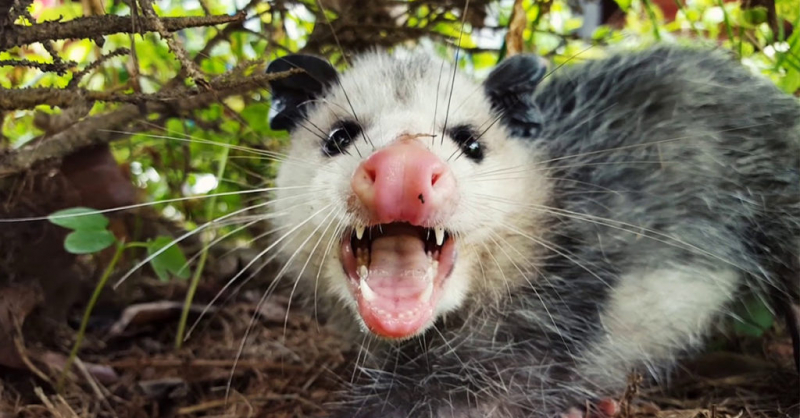
Photo: https://ggapest.com/ 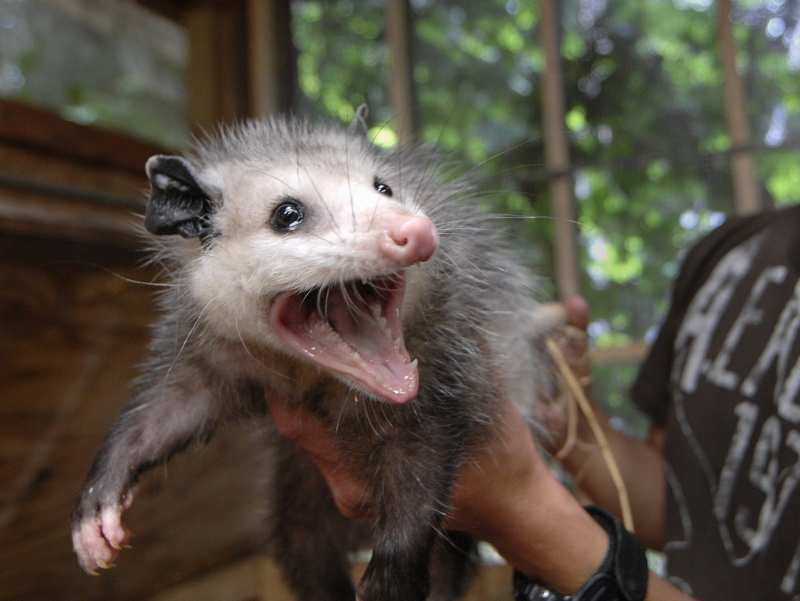
Photo: https://www.silive.com/ -
Baby opossums are known as joeys, much like all other marsupial pups, and the pouches that marsupials are so well-known for are an important aspect of the joeys' development. Opossum mothers only carry their young for 13 days before giving birth to infants that are no bigger than honeybees. The joeys will immediately crawl into their mother's pouch where they will continue to grow after birth. Not all joeys will survive because of their small size. Although there have been surviving litters as big as 20, the norm is at about eight.
Joeys spend about two months in their mother's fur-lined pouch, but even after that, they remain close to their mothers for some time. The joeys won't stay in the pouch all the time between the ages of two and four months, but they still rely on their moms for food and shelter. The baby opossums may be seen at this time riding around on their mothers' backs, which is a very cute behavior. The joeys are able to thrive on their own after roughly 100 days.
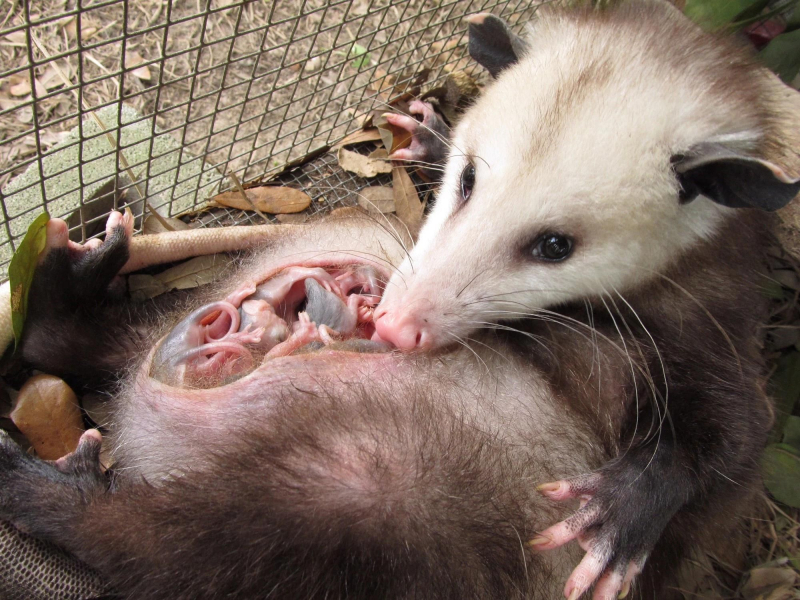
Photo: https://www.washingtonpost.com/ 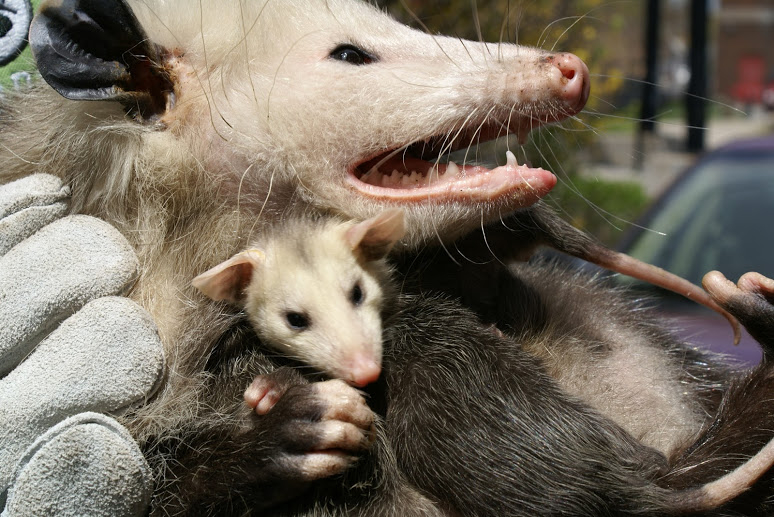
Photo: https://www.skedaddlewildlife.com/ -
Opossums are opportunistic eaters, which means they consume both plants and animals as they come into contact with them. For a quick and simple meal, they will often dig through our trash or break into containers containing food. According to the National Wildlife Federation, a single opossum can consume as many as 5,000 ticks in a season in places where ticks are common.
Opossums are meticulous groomers and eat almost all of the ticks they remove from their bodies, which is why they ingest so many ticks. According to the wildlife federation, opossums really consume more than 95% of the ticks that attempt to feed on them. They control a variety of unpleasant things in addition to ticks. Cockroaches and small rodents like rats and mice are also eaten by opossums. They also occasionally consume carrion or dead animals.
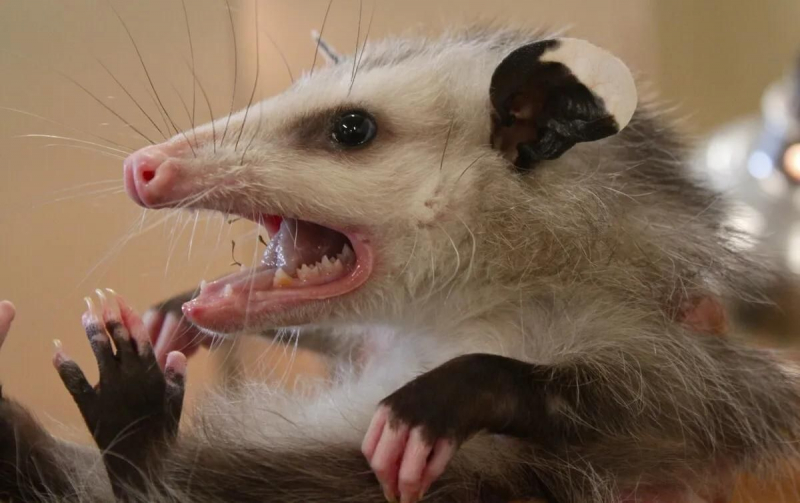
Photo: https://www.bangordailynews.com/ 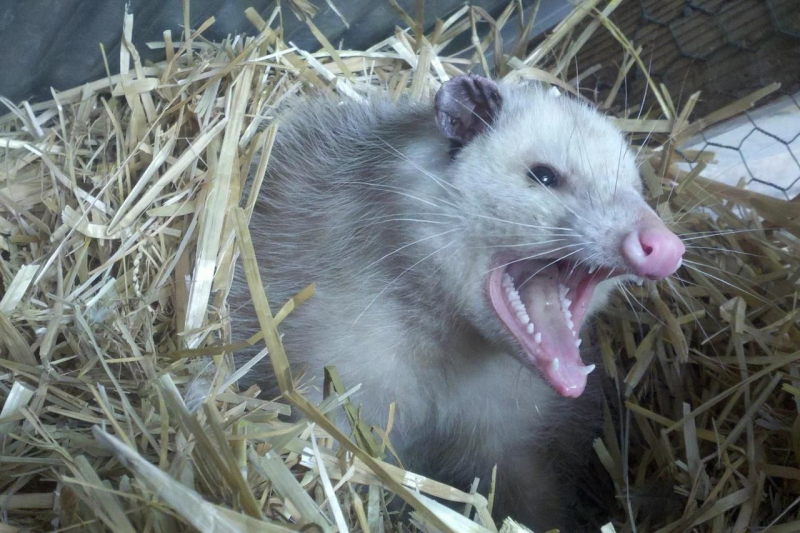
Photo: https://www.fieldandstream.com/ -
“Playing dead”, sometimes known as "playing possum", is one of the most well-known behaviors of opossums. The fact that the opossum is not amusing itself indicates that this is real and that some sort of purpose is at play.
An opossum will frequently hiss or show its teeth when threatened or, more likely, run. However, if a predator surprises it, it will become catatonic. In essence, it passes out and becomes unconscious. This is an involuntary action that the opossum has no control over.
The opossum does indeed seem to be dead. It appears to be grinning deathly, exposing its teeth. Its anus releases a vile fluid with a rotten, cadaverous odor.
This death-feigning tactic carries several dangers. The opossum is asleep. There is therefore no way out if the predator chooses to continue biting the opossum. It is frequently suggested as the cause of the high number of opossums that are found dead on roads. The opossum will stay asleep in this state for a few minutes to several hours.
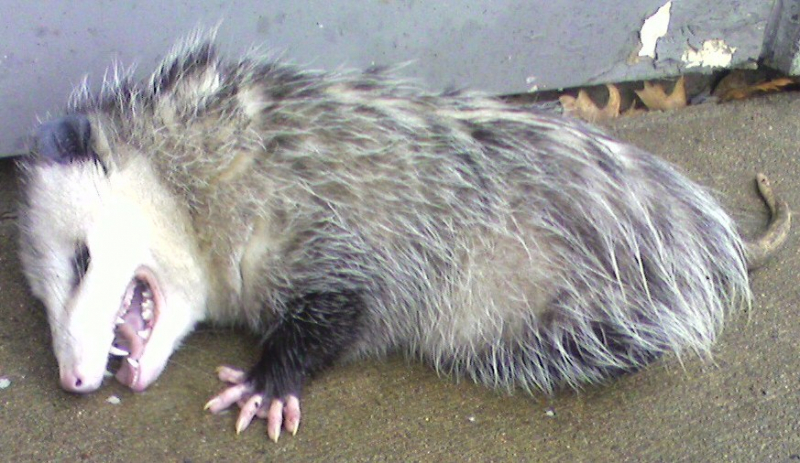
Photo: https://en.wikipedia.org/ 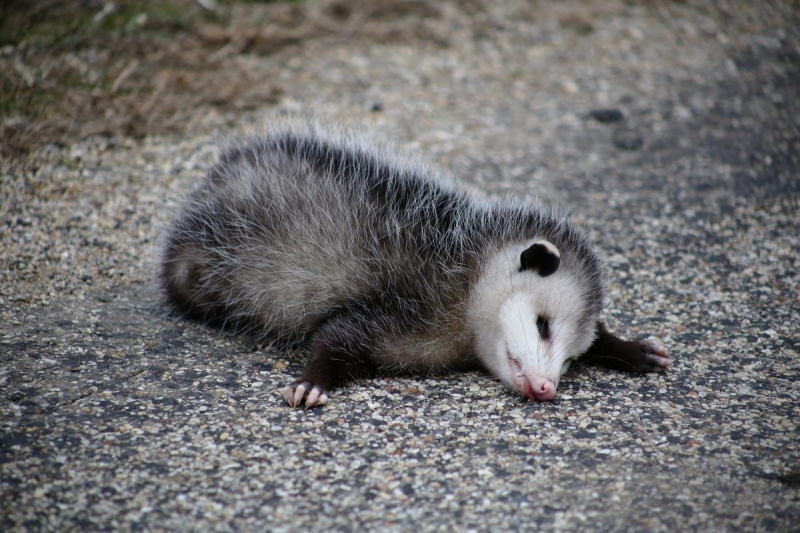
Photo: https://assortedanimals.com/ -
Opossums use their prehensile tails as a fifth appendage or as a hand, which is one of the most interesting facts about opossums. They have long, hairless tails that resemble rat tails and are almost as long as the opossums themselves. They become more prone to hypothermia and possibly frostbite because of this. They can grab the sides of trees to add additional stability while climbing or transport grass and leaves to use as construction materials for nests. In cartoons, baby possums are frequently shown hanging upside-down from branches using their tails. They can only be supported on their tails for a brief period of time.
Many opossums have injured ears and tails as a result of enduring hard winters. Their tails frequently look stumpy or as though something has bitten them off, although these are symptoms of frostbite.
Opossums don't hibernate; they only retreat into dens for a few days to avoid the cold. They must periodically eat. In the winter, they may abandon their usual nocturnal feeding schedule and do so during the day to benefit from the milder weather. During cold spells, this daytime foraging is of little use. Many opossums with short tails after prolonged cold spells.
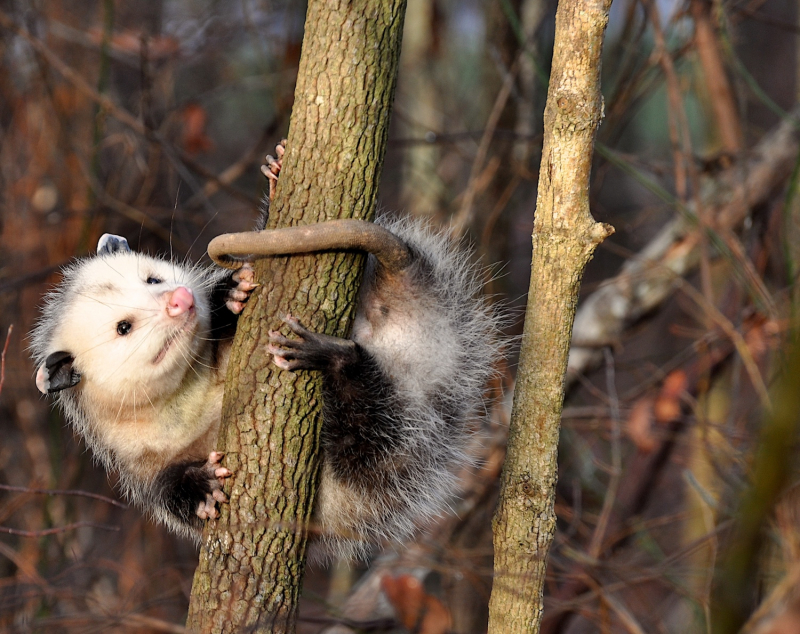
Photo: https://www.reconnectwithnature.org/ 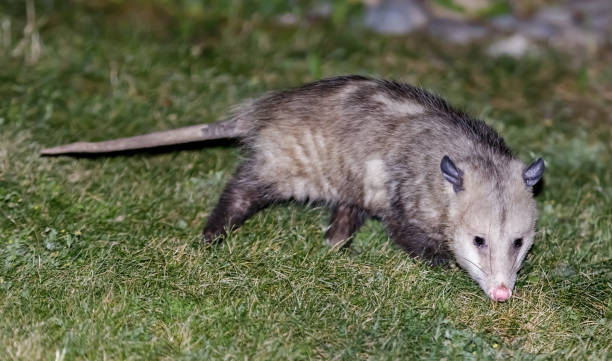
Photo: https://www.istockphoto.com/ -
The Virginia opossum is a tropical species that has gradually migrated north throughout the course of its evolutionary history. Opossums were widespread in the Southeast of the United States in 1900, but they soon started moving quickly north. They are still pretty widespread now in the Upper Midwest, New England, and Canada. The Virginia opossum population is growing, and it is not thought to be in danger, according to the IUCN.
Although there are other opossum species found in other regions of the world, the Virginia opossum is the only marsupial known to call North America home outside of Mexico. The tiny group of creatures known as marsupials, which also includes kangaroos, wombats, koalas, and opossums, rear their young in a pouch, including these species. According to the Australian Museum, of the more than 330 marsupials in the world, two-thirds reside in Australia and the majority of the remaining one-third do so in South America. The only opossum that dwells in North America and the United States is the Virginia opossum.
The kangaroo, the most well-known marsupial of them all, is one of Australia's pouched creatures. Other well-known species include koalas, Tasmanian devils, wallabies, and wombats. Down Under, opossums come in a variety of species, but they are entirely distinct from those found in North America.
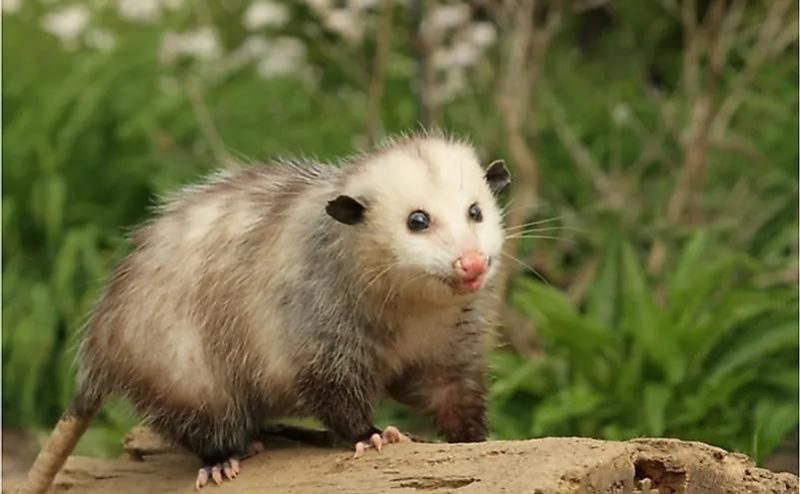
Photo: https://www.worldatlas.com/ 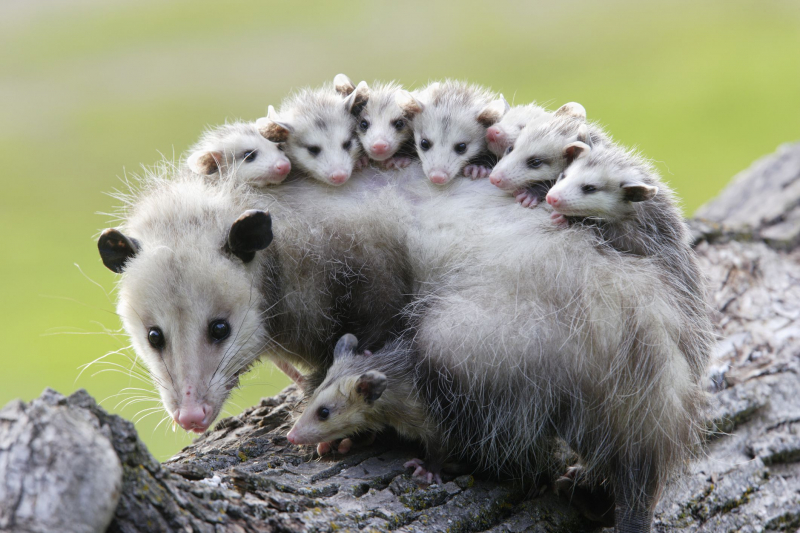
Photo: https://www.thoughtco.com/ -
Opossum and possum are used to refer to the same item in North America, however, in Australia, an entirely different mammal is meant by the term "possum." The Virginia opossum and the brushtail possum are two of the most well-known of their respective varieties. The similarities between the two omnivorous, small- to medium-sized marsupials cease there.
The possum, which resembles an adorable cross between a squirrel and a chinchilla, is not related to the North American mammal with whom it shares (most of) its name. Instead, it is a member of a distinct order. With their sharp claws, opposable thumbs on their back paws, and prehensile tails that enable them to scale trunks and cling to branches, opossums are expert tree climbers. In fact, opossums adore trees so much that they frequently build their nests inside of them. Despite the possibility of misunderstanding, the possum is commonly used to shorten the word "opossum" in this region of the world. If the word "possum" appears on this list, you can presume it refers to the North American animal.
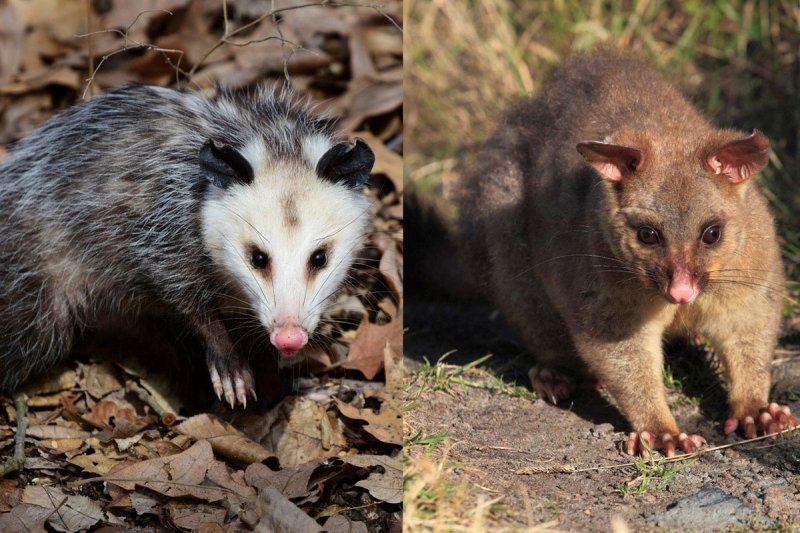
Photo: https://www.bobvila.com/ 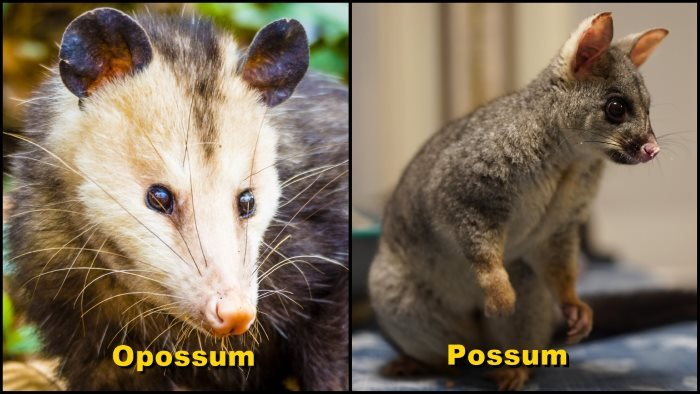
Photo: https://www.gingersoftware.com/ -
The opossum possesses the same opposable thumbs that people and other primates do. It's known as a hallux. Their cute front feet, which have five tiny pink toes and appear to be wearing gloves, may catch your eye when you first glance at their feet, but their back feet are where their thumbs are located. The hallux is the only opossum finger without a claw, in contrast to the others.
On its rear feet, the opossum has opposable large toes that stand away from the other toes in a manner reminiscent of a human hand and thumb. The opossum's hallux gives it superior climbing and grabbing abilities compared to most other mammals. Opossums are even more unusual than other animals since they have thumbs on their back feet. This is also one of the most interesting facts about opossums.
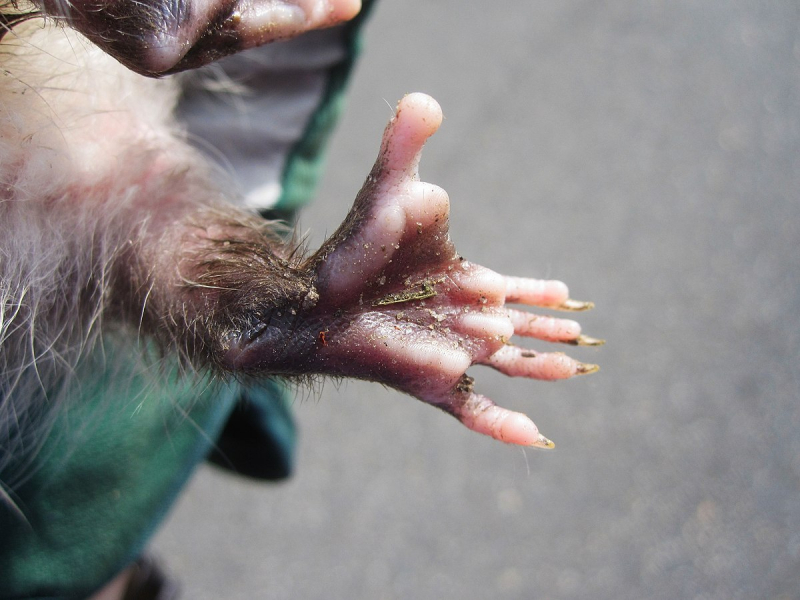
Photo: opposable thumbs 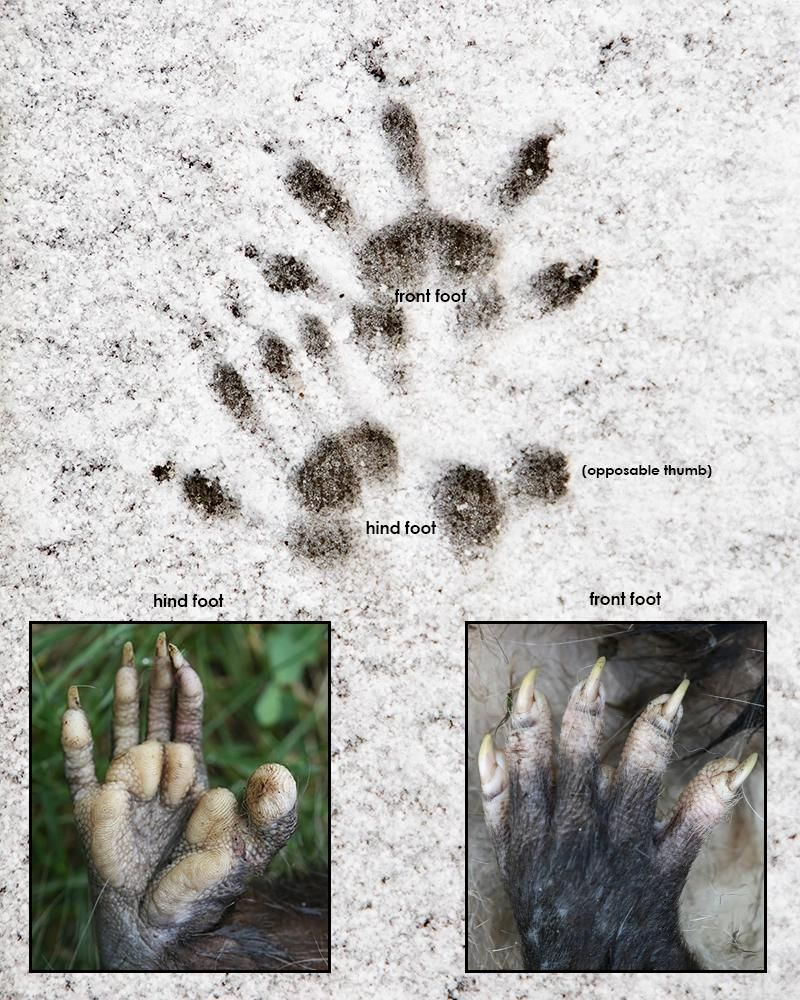
Photo: https://naturallycuriouswithmaryholland.wordpress.com/ -
Opossums have exceptional intelligence in a number of areas, despite the misconception that they are not the sharpest tools in the drawer. Opossums have a keen sense of smell, which helps them remember things very well. Opossums are excellent at locating food, and if they discover a food source that is worth returning to, they can remember exactly where it is so they may return for a second round.
Researchers discovered that during behavioral tests on opossums, opossums remembered the location of food better than dogs, cats, rats, turtles, pigs, rabbits, goats, and chickens. They can also use their superior memory to navigate a maze more quickly than rats, who are essentially the maze-running mascots. A year after smelling harmful compounds, they may still remember their smell.
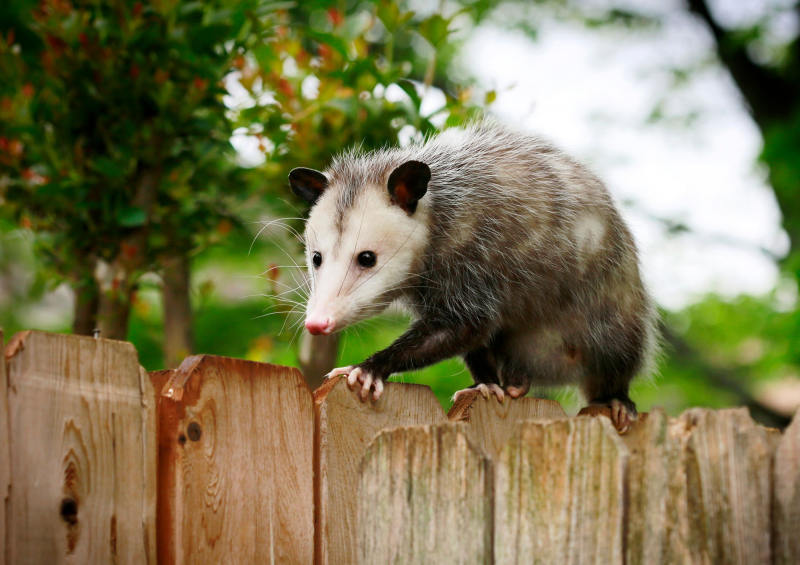
Photo: https://www.agdaily.com/ 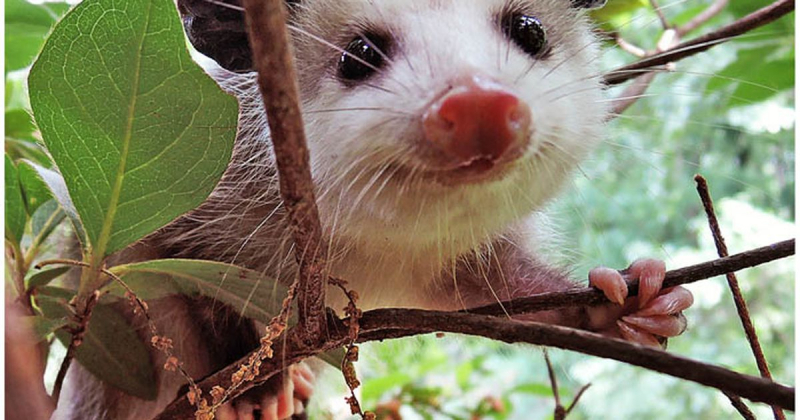
Photo: https://www.ajc.com/ -
Opossums may appear untidy, yet they take great care of themselves. Opossums aren't the cleanest animals in nature because of their habit of acting and smelling like corpses. Opossums groom themselves when they are not actively looking for food or sleeping.
According to the Washington Department of Fish and Wildlife, possums, like housecats, often and thoroughly groom themselves with their tongue and paws. Opossums lick their paws and wipe their faces in the same manner. Using their claws to comb their fur and remove insects to eat, they groom themselves from head to tail. When caring for their young, female opossums are especially meticulous in keeping their pouches clean. Because they generally lack sweat glands, opossums are thought to use this behavior to stay cool. Additionally, it makes them smell less (when they aren't secreting nasty predator-repellant, that is).
Source: https://www.youtube.com/ 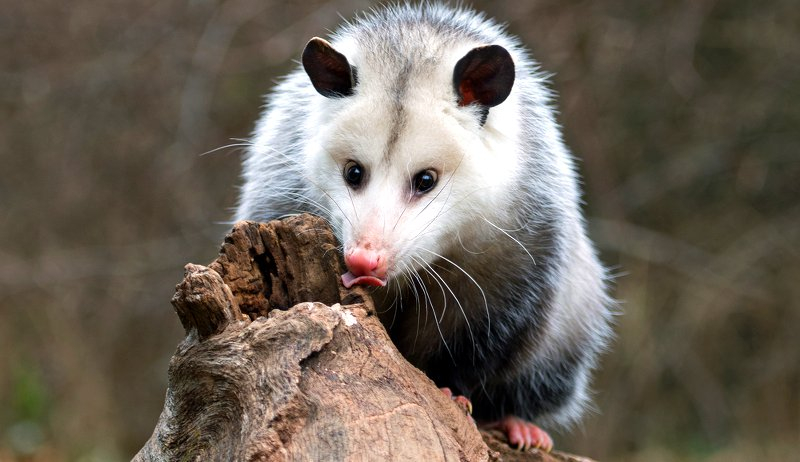
Photo: https://www.hobbyfarms.com/































